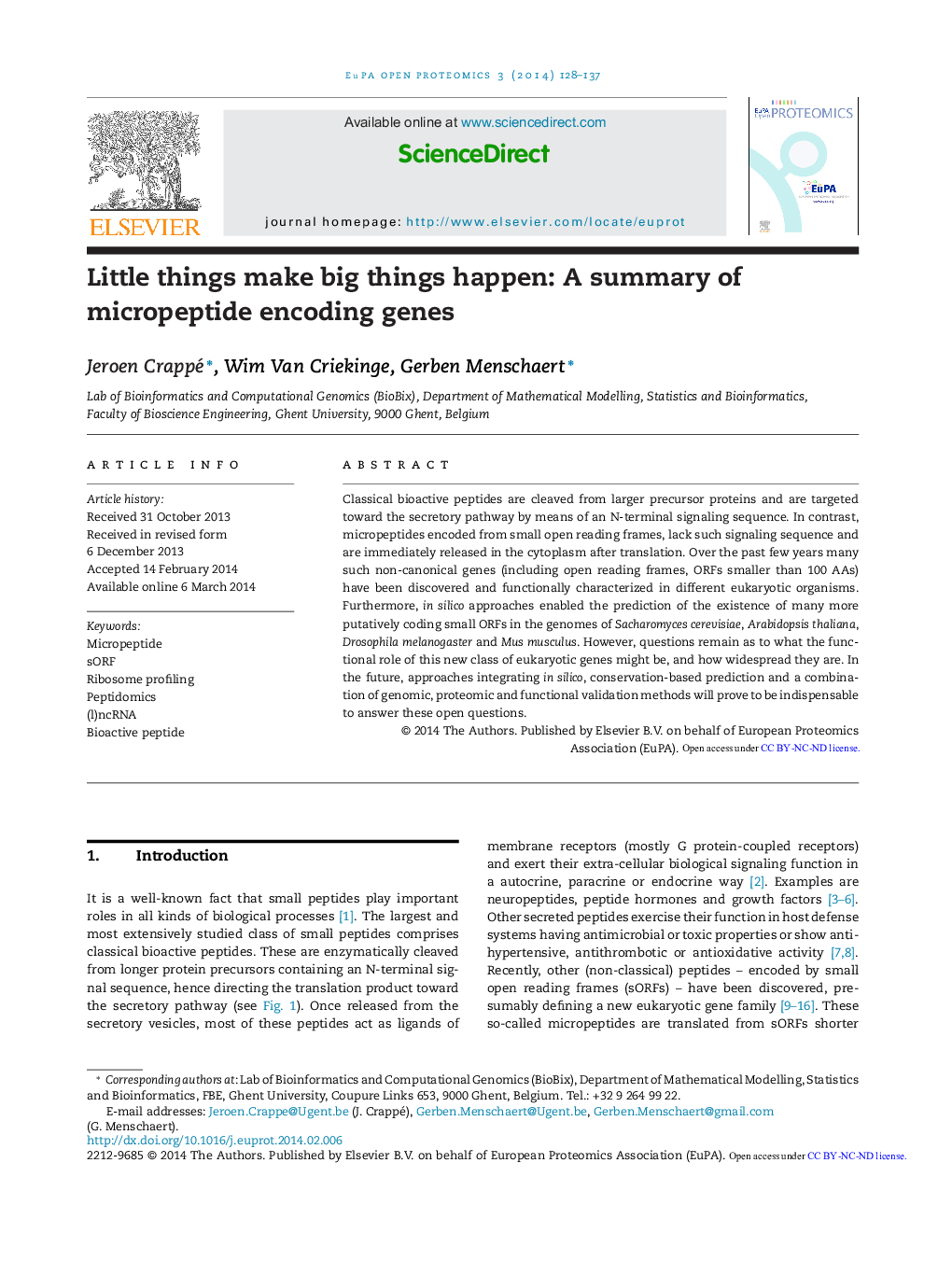| Article ID | Journal | Published Year | Pages | File Type |
|---|---|---|---|---|
| 1182979 | EuPA Open Proteomics | 2014 | 10 Pages |
Classical bioactive peptides are cleaved from larger precursor proteins and are targeted toward the secretory pathway by means of an N-terminal signaling sequence. In contrast, micropeptides encoded from small open reading frames, lack such signaling sequence and are immediately released in the cytoplasm after translation. Over the past few years many such non-canonical genes (including open reading frames, ORFs smaller than 100 AAs) have been discovered and functionally characterized in different eukaryotic organisms. Furthermore, in silico approaches enabled the prediction of the existence of many more putatively coding small ORFs in the genomes of Sacharomyces cerevisiae, Arabidopsis thaliana, Drosophila melanogaster and Mus musculus. However, questions remain as to what the functional role of this new class of eukaryotic genes might be, and how widespread they are. In the future, approaches integrating in silico, conservation-based prediction and a combination of genomic, proteomic and functional validation methods will prove to be indispensable to answer these open questions.
Graphical abstractFigure optionsDownload full-size imageDownload as PowerPoint slide
